Preparing the Public Opinion in the Community to Accept Distributed Energy Systems and Renewable Energy
Abstract
:1. Introduction
1.1. The United States
1.2. Europe
1.2.1. Germany
1.2.2. Italy
1.3. The United Kingdom
1.4. China
2. Education
- -
- Raising public awareness of the technology.
- -
- Instilling confidence in the technology among consumers.
- -
- Providing technical support to consumers.
- -
- Better and more suitable training of professionals, such as engineers, scientists, and researchers, who will develop new systems, devices, and technologies for the industry.
- -
- Training of policy analysts who can study and improve the effectiveness of the policies and plans that governments establish.
- -
- Training of people who will advise and help future customers of the industry.
- Concepts and courses on renewable energy should be introduced through all formal and informal stages of education. It is essential to guarantee both consistency and continuity in the education materials taught at different levels in order to maximize the efficiency and effectiveness of the renewable energy education strategy.
- Renewable energy education programs must combine academic and practical aspects. The hands-on practical courses can include conducting laboratory experiments, demonstration operational systems, field visits, and field installation of systems. It is also possible to offer personal hardware-oriented projects as part of the programs.
- Sufficient and adequate teaching resources must be provided as part of the program. They should include textbooks, laboratory manuals, and teacher guides for all levels and types of education, along with the hands-on skills training mentioned above.
- The education programs should engage all of the members of the society as a whole. Everyone can and should be informed about the basic concepts of efficient energy use and the different renewable energy options available to them. This phase can include the use of mass communication media, relevant exhibitions, and more.
- Organizing short courses, workshops, etc. is necessary, to ensure that the knowledge and skills of the teachers and, in accordance, the professionals are updated regularly.
- The primary goal of any educational program is to prepare the population for the future and promote the use of renewable energy. Therefore, it is important to assess the current education programs and training needs to understand the societal needs of the future. Renewable energy education must be taken seriously, as its current level is far from satisfactory.
- Guidelines and standards regarding university-level academic programs should be established so they can be a system of accreditation and standardization
- Quality education is essential to tackle common issues, and unlike many other solutions, it can serve as a long-term solution. It is crucial to educate children at young ages, as these years shape one’s perspectives and have long-term effects on their behavior. Along with that, educational programs can promote the usage of new technologies, thereby achieving the implementation of new renewable energy technologies.
2.1. Israel
- -
- “Energia Berosh Aher” (Energy with a Different Mindset)—an educational program for elementary school and junior high school. About 900 schools took part in the program between 2013 and 2015. The initiative includes a website with the same name, that offers digital modules, lesson plans, quizzes, and simulators on various related topics (e.g., daily usage of electricity and its consequences, how to use energy wisely at home, and the grading of the energy consumption of electronic devices).
- -
- Kits to implement scientific and technological principles, to encourage behavioral patterns that promote energy-saving and efficiency. The kits provide an active experience with various technological mechanisms and allow for the investigating and solving of energy-related problems. Seven hundred schools received the kit between the years 2015 and 2019.
2.2. Publicity and Raising Awareness
- -
- Campaigns: between 2016 and 2019, two campaigns were running to raise awareness of energy efficiency, focusing on energy consumption in households and energy efficiency. The two campaigns are estimated to cost about 1 million NIS (about 310,385 USD).
- -
- Raising awareness for energy efficiency: the ministry collaborated with several organizations to run two campaigns to raise awareness in the various Israeli sectors and companies.
3. Materials and Methods
3.1. The Course
3.2. Method
3.2.1. First Session
The “Disappearing Styrofoam” Kit & the Bean Kit
3.2.2. Second Session
3.2.3. Third Session
The Thermos Insulation Experiment
3.2.4. Fourth session
The Formation of the Carbon Dioxide Experiment
4. Results & Discussion
5. Conclusions
Author Contributions
Funding
Informed Consent Statement
Data Availability Statement
Acknowledgments
Conflicts of Interest
References
- International Energy Agency (IEA). Status of Power System Transformation; IEA: Paris, France, 2017. [Google Scholar]
- Krishna, K.S.; Kumar, K.S. A review on hybrid renewable energy systems. Renew. Sustain. Energy Rev. 2015, 52, 907–916. [Google Scholar] [CrossRef]
- International District Energy Association. Combined Heat and Power (CHP): Essential for a Cost Effective Clean Energy Standard; The International District Energy Association (IDEA): 2011. Available online: https://www.energy.gov/sites/prod/files/2013/11/f4/chp_clean_energy_std.pdf (accessed on 1 February 2022).
- US Environmental Protection Agency (EPA), dCHPP (CHP Policies and Incentives Database). Available online: https://www.epa.gov/chp/dchpp-chp-policies-andincentives-database (accessed on 1 February 2022).
- The White House Pesident Barback Obama, Blueprint for a Secure Energy Future. 2011. Available online: https://obamawhitehouse.archives.gov/issues/blueprint-secureenergy-future (accessed on 19 February 2022).
- IEA. Carbon Capture Utilisation and Storage. 2019. Available online: https://www.iea.org/topics/carbon-capture-and-storage/ (accessed on 10 February 2022).
- Social Protection Statistics. 2019. Available online: https://ec.europa.eu/eurostat/statistics-explained/index.php/Social_protection_statistics#Social_protection_expenditure_and_GDP_rates_of_change (accessed on 27 January 2022).
- Dickel, R. The New German Energy Policy: What Role for Gas in a De-Carbonization Policy? No. 85; OIES Paper: NG, 2014; Available online: https://www.google.com/url?sa=t&rct=j&q=&esrc=s&source=web&cd=&cad=rja&uact=8&ved=2ahUKEwinq7Ps7pr4AhVFGKYKHVeDCkoQFnoECAgQAQ&url=https%3A%2F%2Fwww.oxfordenergy.org%2Fwpcms%2Fwp-content%2Fuploads%2F2014%2F03%2FNG-85.pdf&usg=AOvVaw3HKePY7Vp9h81hFPZHbDU0 (accessed on 1 February 2022).
- Duarah, P.; Haldar, D.; Patel, A.K.; Dong, C.D.; Singhania, R.R.; Purkait, M.K. A review on global perspectives of sustainable development in bioenergy generation. Bioresour. Technol. 2022, 348, 126791. [Google Scholar] [CrossRef] [PubMed]
- Ministry of Economic Development. Italy’s National Energy Strategy: For a More Competitive and Sustainable Energy. 2020. Available online: https://www.mise.gov.it/images/stories/documenti/SEN_EN_marzo2013.pdf (accessed on 15 February 2022).
- Ministry of Economic Development. Italy’s National Energy Strategy. 2017. Available online: https://www.mise.gov.it/images/stories/documenti/BROCHURE_ENG_SEN.PDF (accessed on 15 February 2022).
- Britain, about the Fit Scheme. Available online: https://www.ofgem.gov.uk/environmentalprogrammes/fit/about-fit-scheme (accessed on 1 February 2022).
- Department for Business, Energy & Industrial Strategy (BEIS). Updated Energy and Emissions Projections 2016. Available online: https://assets.publishing.service.gov.uk/government/uploads/system/uploads/attachment_data/file/599539/Updated_energy_and_emissions_projections_2016.pdf (accessed on 29 January 2022).
- Distributed Energy in China: Review and Persoective 2020–2025. Available online: https://wri.org.cn/en/research/distributed-energy-china-2020-2025 (accessed on 1 February 2022).
- Paris Renewable. Global Status Report (Paris: REN21 Secretariat). Paris Renewable Energy Policy Netw. 21st Century France. 2018. Available online: https://www.ren21.net/wp-content/uploads/2019/05/GSR2018_Full-Report_English.pdf (accessed on 1 February 2022).
- International Renewable Energy Agency Roadmap. Doubling the Global Share of Renewable Energy: A Roadmap to 2030 Working Paper. Available online: https://www.irena.org/-/media/Files/IRENA/Agency/Publication/2013/IRENA-REMAP-2030-working-paper.pdf (accessed on 1 February 2022).
- Jennings, P. New directions in renewable energy education. Renew. Energy 2009, 34, 435–439. [Google Scholar] [CrossRef]
- Kandpal, T.C.; Broman, L. Renewable energy education: A global status review. Renew. Sustain. Energy Rev. 2014, 34, 300–324. [Google Scholar] [CrossRef]
- Vardimon, R. Assessment of the potential for distributed photovoltaic electricity production in Israel. Renew. Energy 2011, 36, 591–594. [Google Scholar] [CrossRef]
- Lehmann, H.; Peter, S. Assessment of Roof & Façade Potentials for Solar Use in Europe; Institute for Sustainable Solutions and Innovations (ISUSI): Aachen, Germany, 2003; Available online: http://sustainable-soli.com/downloads/roofs.pdf (accessed on 29 January 2022).
- Sørensen, B.; Watt, G. Trends in Photovoltaic Applications, Survey report of selected IEA countries between 1992 and 2005: Report IEA-PVPS T1-15: 2006. 2006. Available online: https://iea-pvps.org/wp-content/uploads/2020/01/tr_2005.pdf (accessed on 1 February 2022).
- The Israeli Ministry of Energy. (2020, November). Israel. Available online: https://www.gov.il/BlobFolder/guide/rd_chief_science/he/RD-booklet-2020-WEB.pdf (accessed on 1 February 2022).
- Roe, A. Israel’s Renewable Energy Production Appears to Have Fallen Short of Its Target. Calcalist.Co.Il Retrieved 27 February 2022. Available online: https://www.calcalist.co.il/local_news/article/bkf0tock5 (accessed on 22 February 2022).
- Friman, H.; Matsliah, N.; Dabbah, E.; Sitbon, Y.; Banner, I.; Einav, Y. Ubiquitous Learning of Renewable Energy and Environmentalism to Various Israeli Populations. In Proceedings of the 2020 International Symposium on Educational Technology, ISET 2020 (2020), Bangkok, Thailand, 24–27 August 2020. [Google Scholar] [CrossRef]
- Friman, H.; Banner, I.; Tuchin, B.S.; Einav, Y. Students Teach Pupils Environmental Issues and Renewable Energy. In IOP Conference Series: Earth and Environmental Science; OP Publishing: Bristol, UK, 2018. [Google Scholar] [CrossRef] [Green Version]
- Friman, H.; Sitbon, Y.; Banner, I.; Shauli, T.; Einav, Y. Renewable energy, ecology and environment to arabic pupils using a creative, “hands on” approach. Environments 2018, 5, 66. [Google Scholar] [CrossRef] [Green Version]
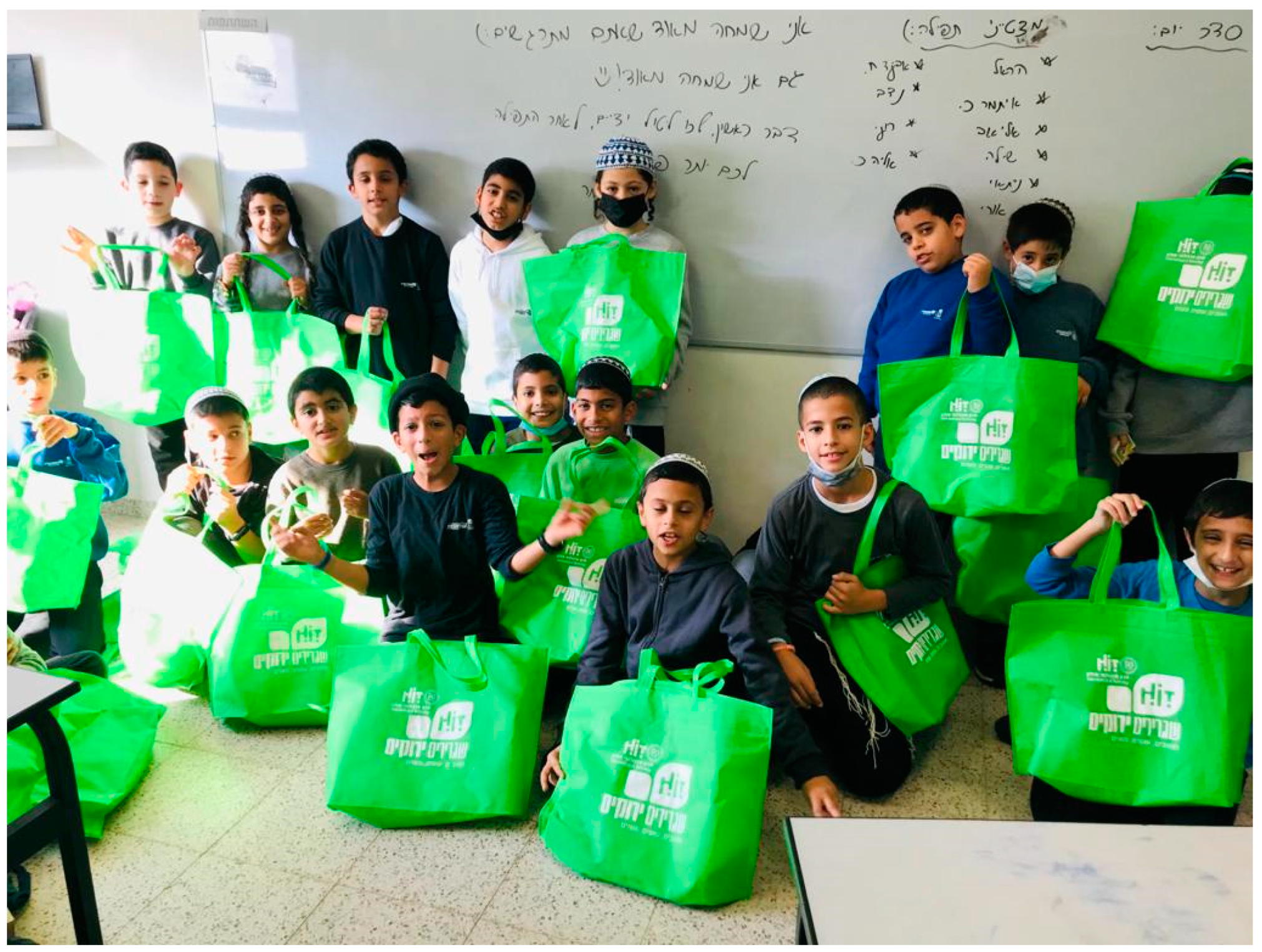
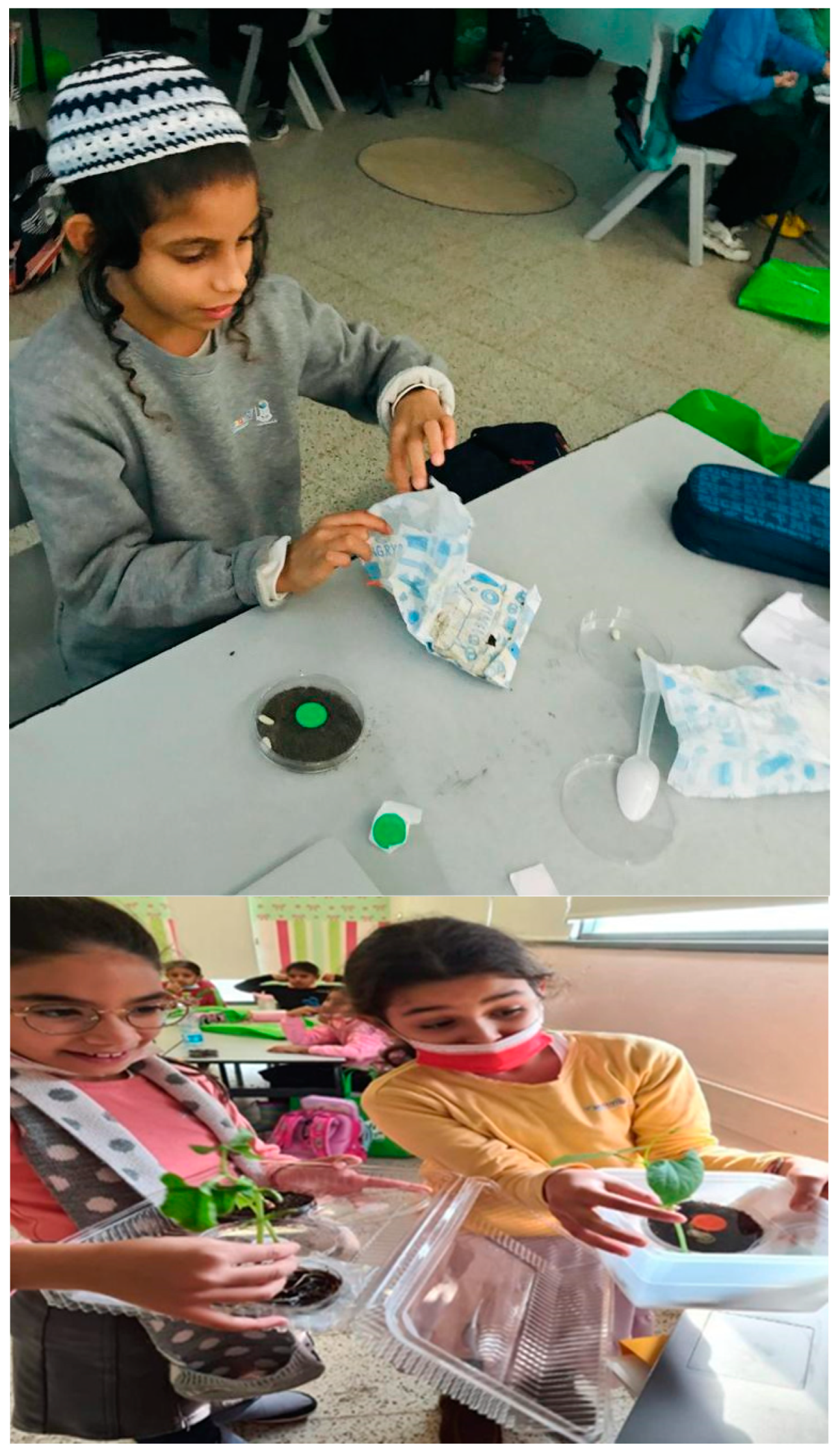
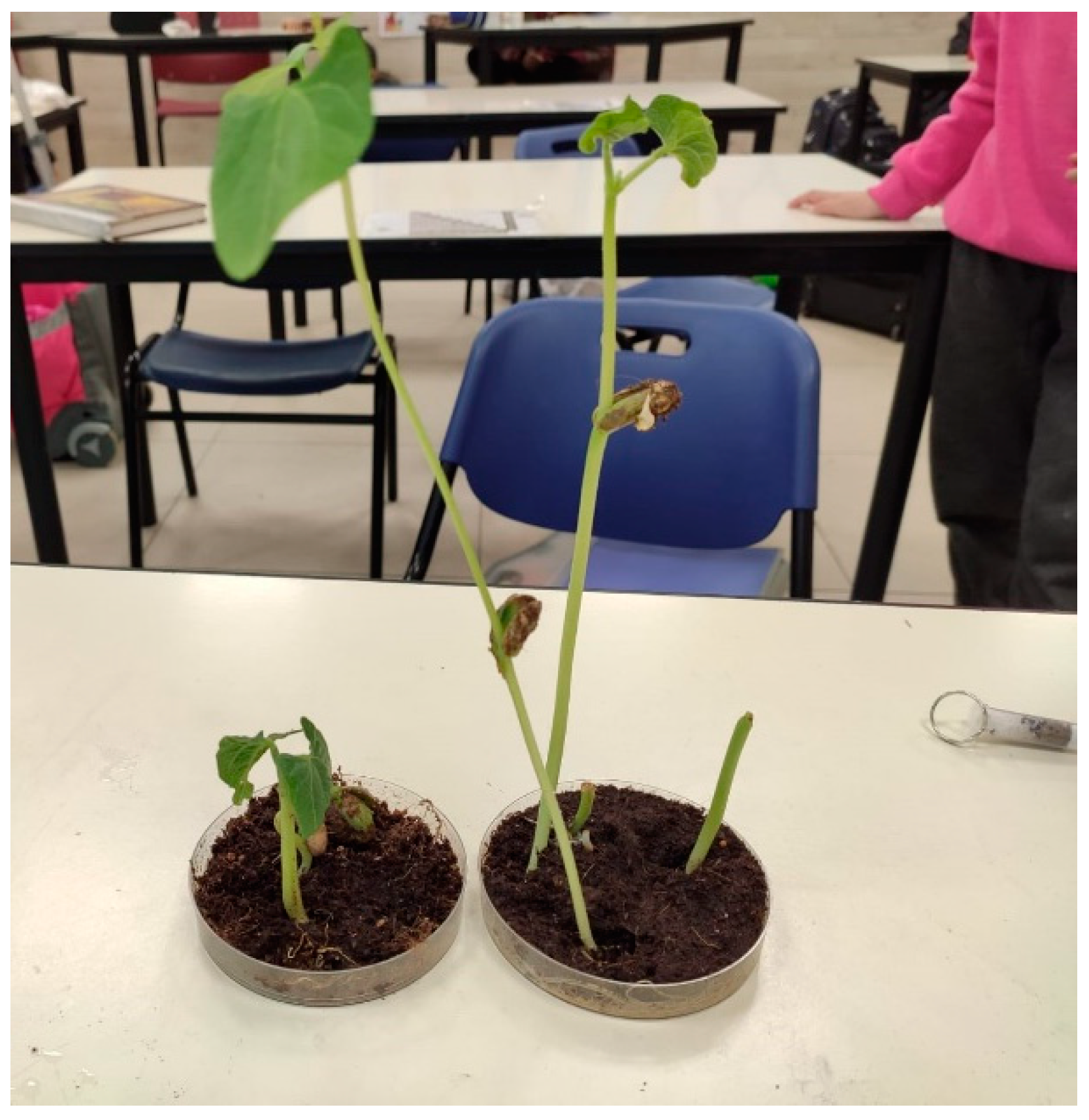
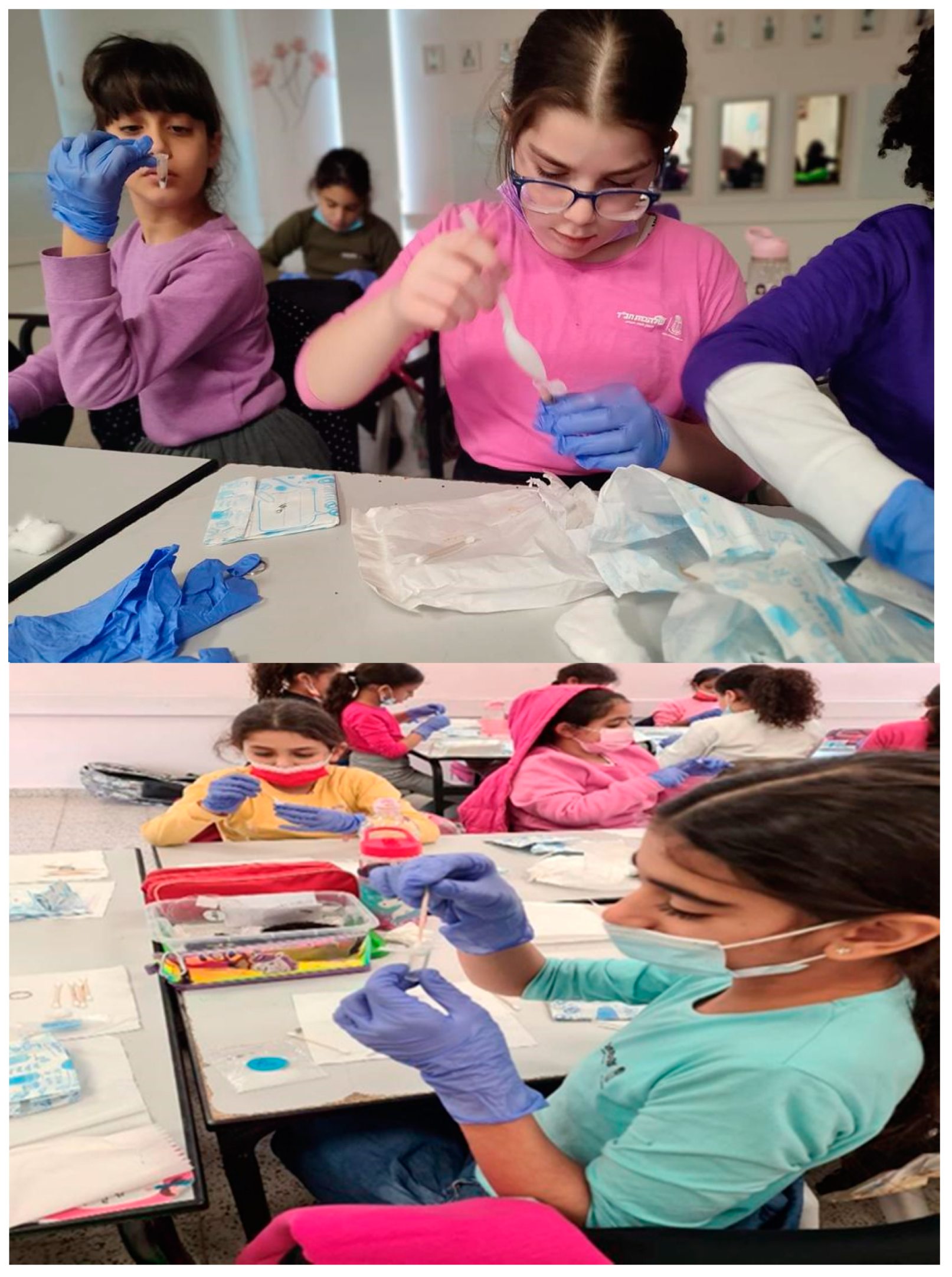
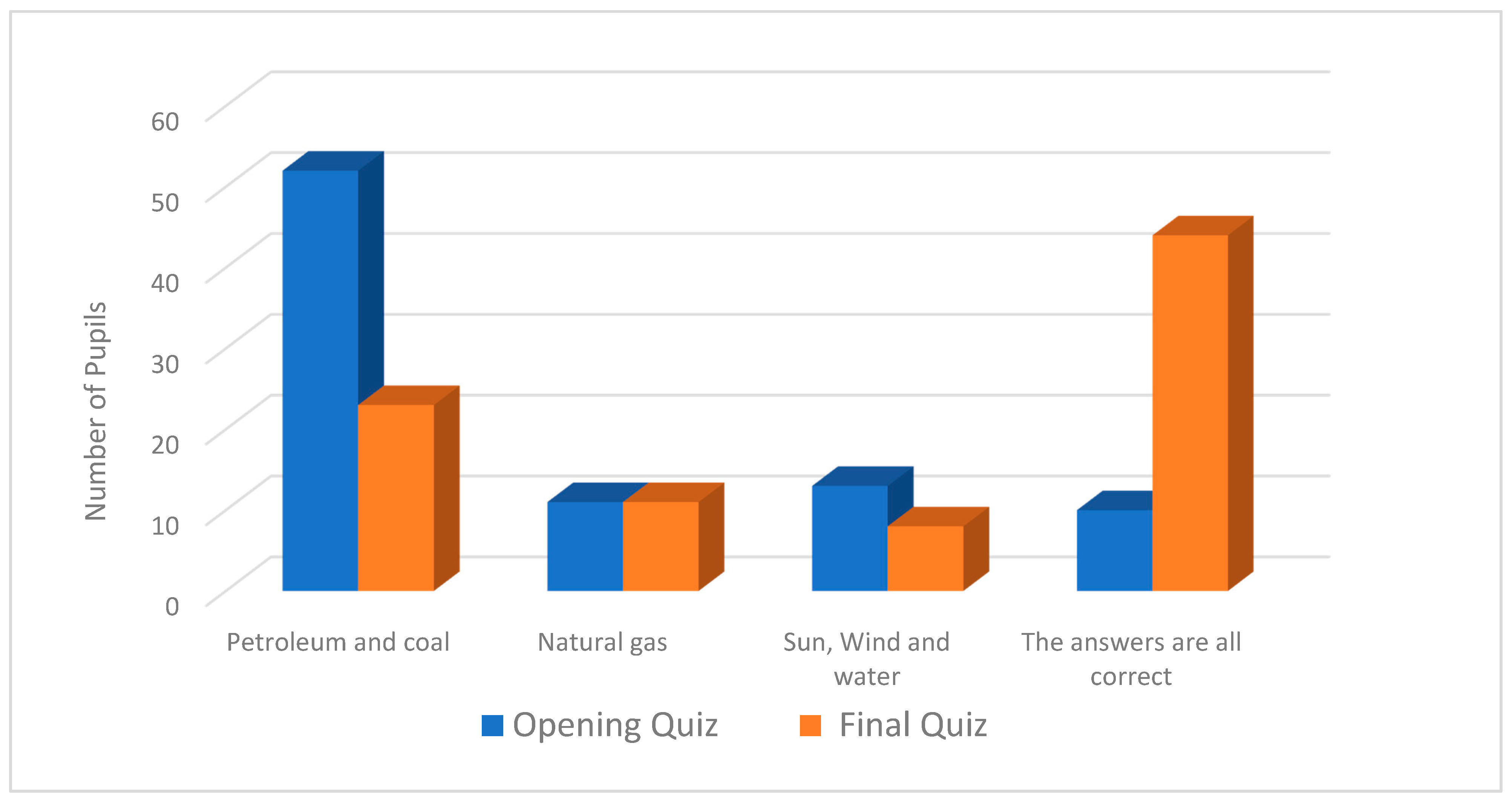

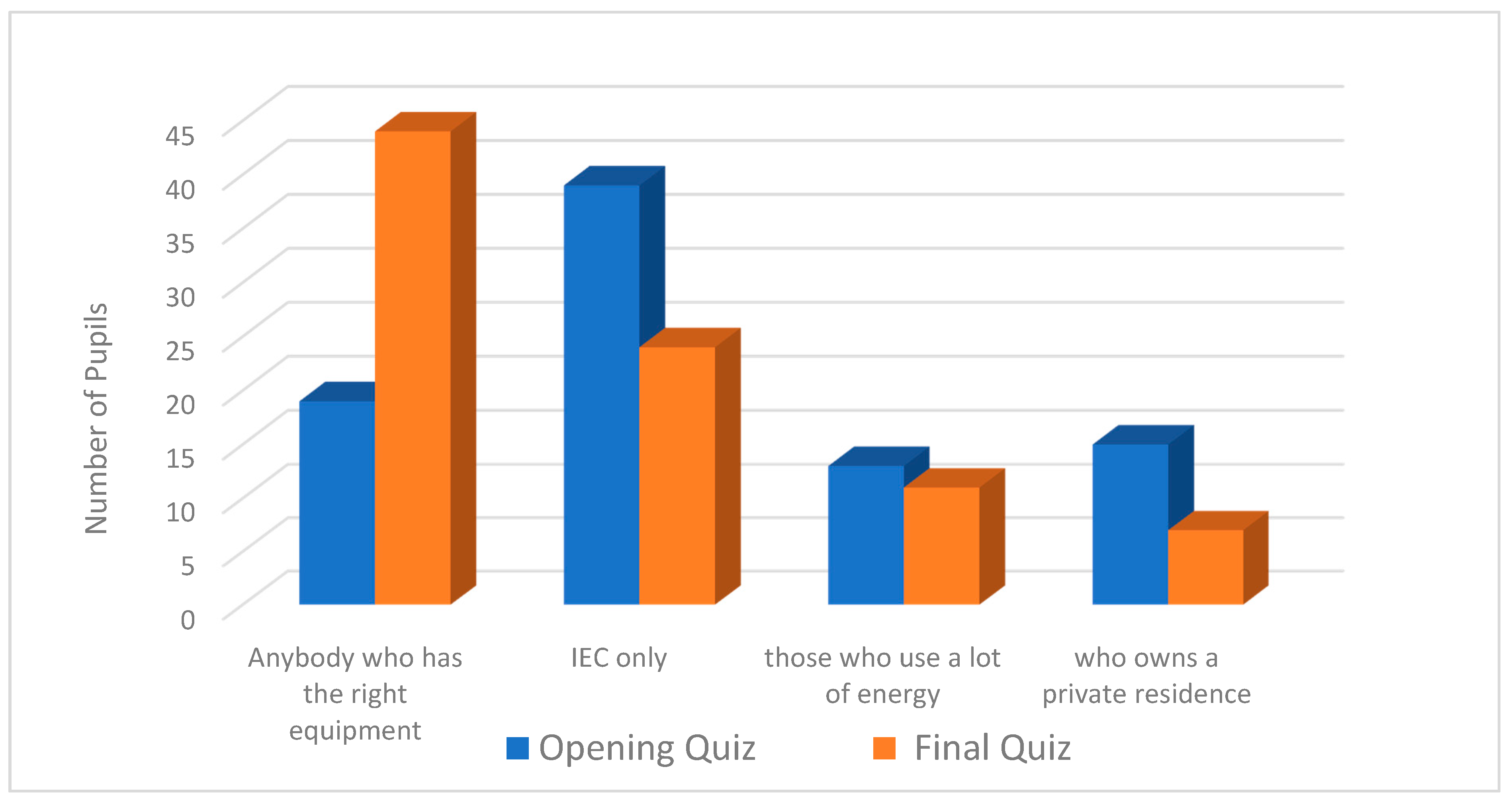
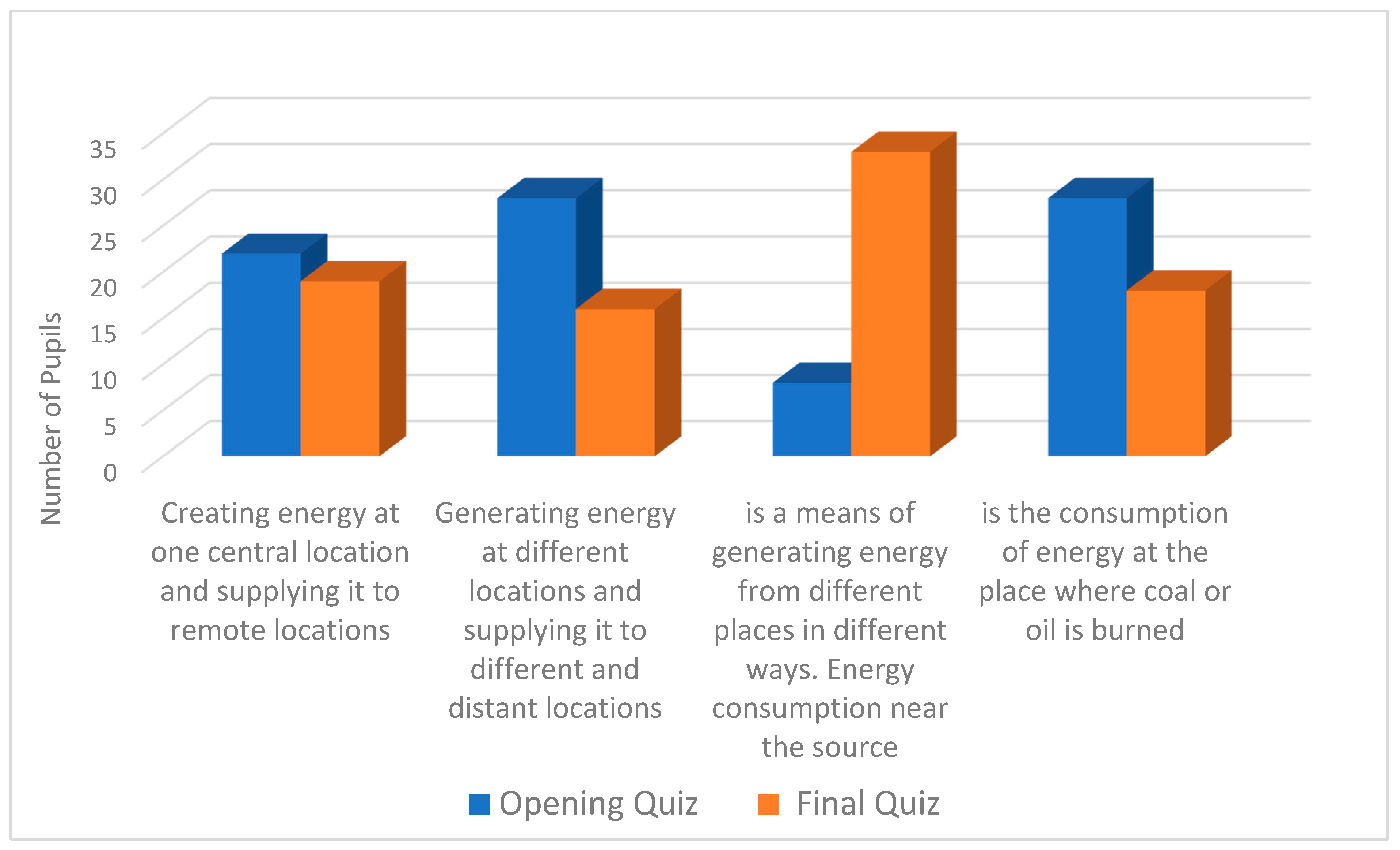
| Experiment Name | Equipment |
|---|---|
| The “Disappearing Styrofoam”, kit |
|
| The “Waste separation” kit |
|
| The bean kit |
|
| The Thermos Insulation Experiment |
|
| the “Kettles” Experiment |
|
| The formation of the carbon dioxide experiment |
|
Publisher’s Note: MDPI stays neutral with regard to jurisdictional claims in published maps and institutional affiliations. |
© 2022 by the authors. Licensee MDPI, Basel, Switzerland. This article is an open access article distributed under the terms and conditions of the Creative Commons Attribution (CC BY) license (https://creativecommons.org/licenses/by/4.0/).
Share and Cite
Friman, H.; Banner, I.; Sitbon, Y.; Einav, Y.; Shaked, N. Preparing the Public Opinion in the Community to Accept Distributed Energy Systems and Renewable Energy. Energies 2022, 15, 4226. https://doi.org/10.3390/en15124226
Friman H, Banner I, Sitbon Y, Einav Y, Shaked N. Preparing the Public Opinion in the Community to Accept Distributed Energy Systems and Renewable Energy. Energies. 2022; 15(12):4226. https://doi.org/10.3390/en15124226
Chicago/Turabian StyleFriman, Hen, Ifaa Banner, Yafa Sitbon, Yulia Einav, and Nava Shaked. 2022. "Preparing the Public Opinion in the Community to Accept Distributed Energy Systems and Renewable Energy" Energies 15, no. 12: 4226. https://doi.org/10.3390/en15124226
APA StyleFriman, H., Banner, I., Sitbon, Y., Einav, Y., & Shaked, N. (2022). Preparing the Public Opinion in the Community to Accept Distributed Energy Systems and Renewable Energy. Energies, 15(12), 4226. https://doi.org/10.3390/en15124226








